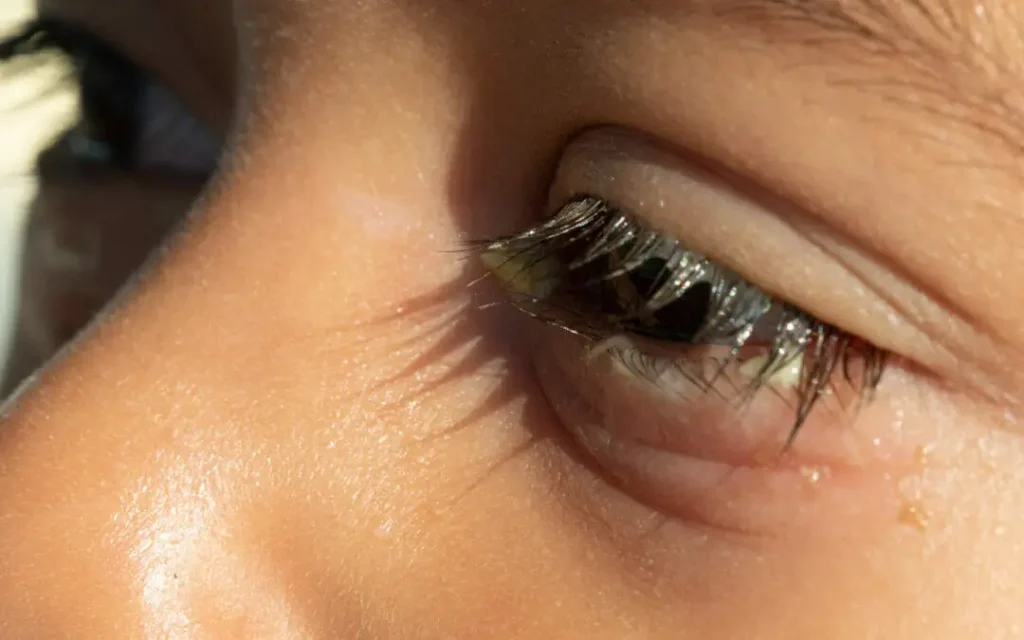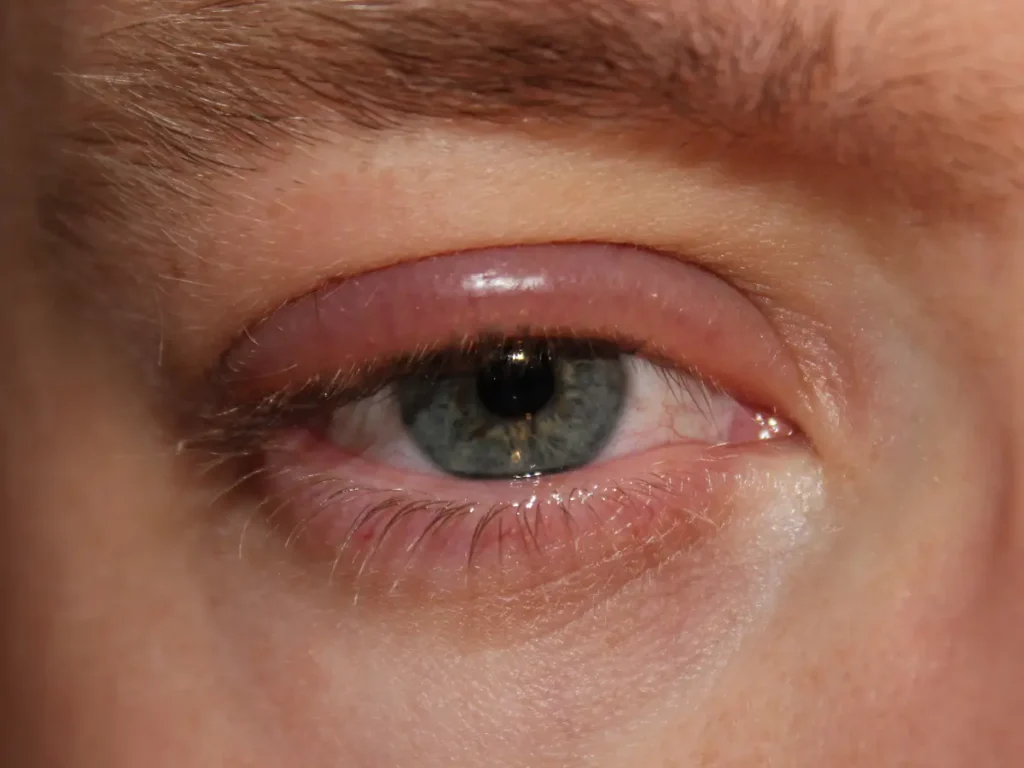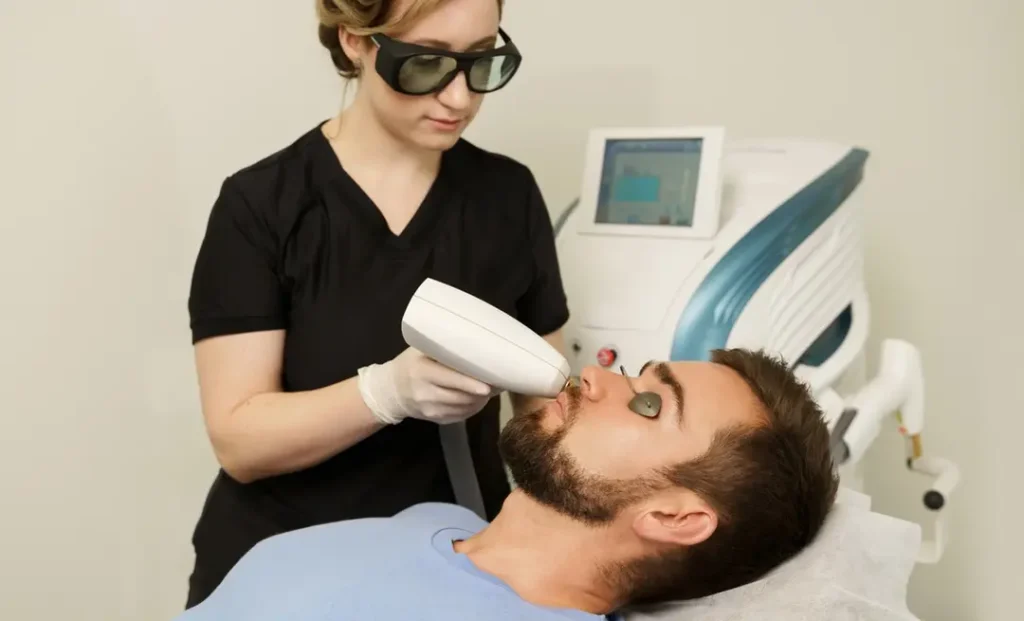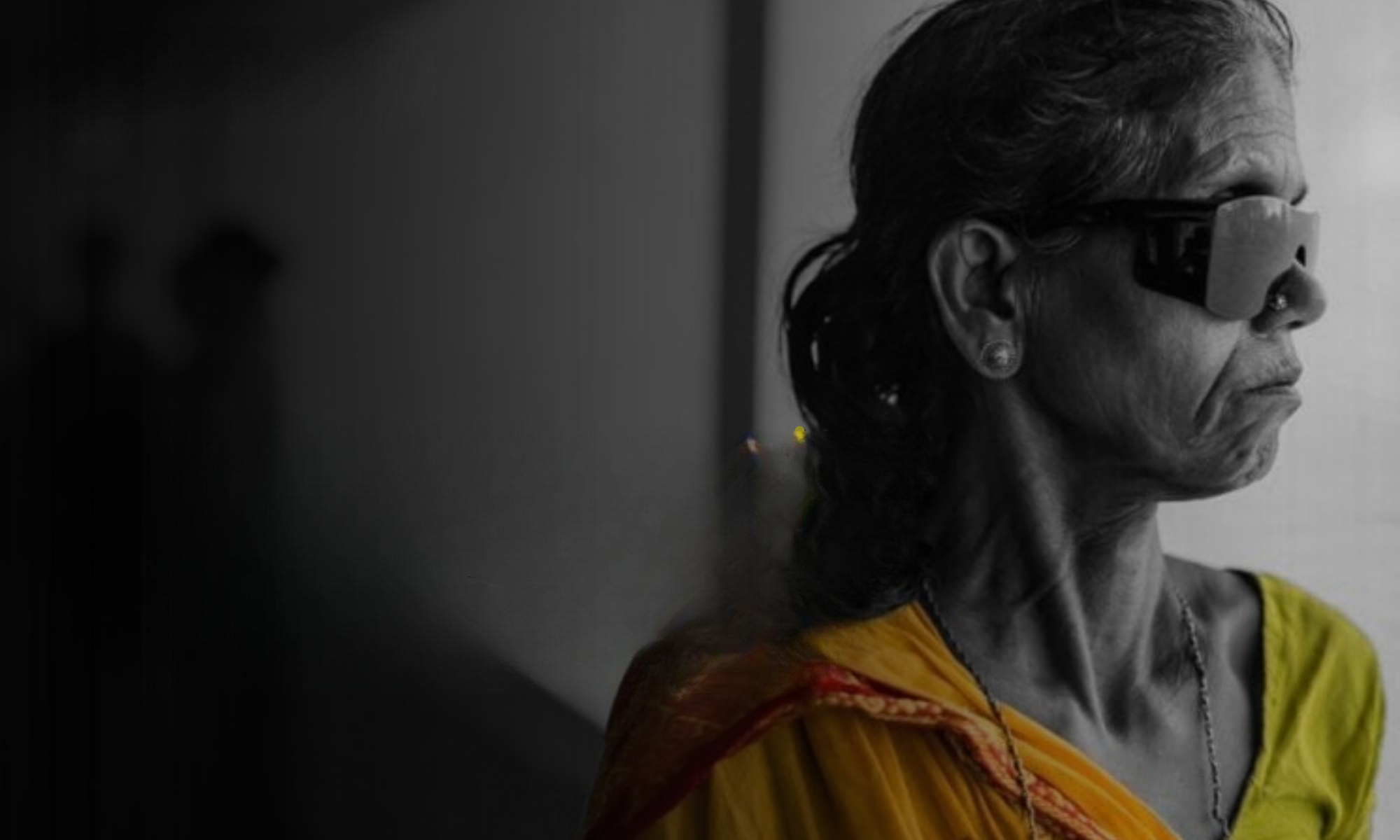Ever woken up with itchy, red eyelids that feel like they’re covered in crusty flakes? It might be more than just a bad morning—it could be Blepharitis. This common but bothersome condition affects the eyelids, making them red, swollen, and irritating.
If you’re tired of dealing with these uncomfortable symptoms, you’re in the right place. In this blog, we’ll explore why it happens, and how you can treat it effectively. Let’s get started and bring some much-needed relief to your eyes!
Contents
Understanding Blepharitis

Blepharitis is a common inflammation of the eyelids that can affect anyone, though it often recurs and can be challenging to manage. This condition primarily targets the edges of the eyelids, right where the eyelashes grow and where the tiny oil glands (meibomian glands) are located. When these glands get clogged or the eyelid area becomes irritated, it leads to the symptoms of Blepharitis.
Characterized by red, swollen, and often itchy eyelids, Blepharitis can manifest in two forms:
- Anterior Blepharitis: This occurs at the outside front edge of the eyelid where eyelashes attach and is often caused by bacteria or dandruff from the scalp and eyebrows.
- Posterior Blepharitis: This affects the inner edge of the eyelid that comes in contact with the eyeball and is typically related to dysfunction of the meibomian glands.
Remember, while Blepharitis does not usually cause permanent damage, it can be uncomfortable and may lead to more severe symptoms if not properly managed.
Recognizing the Symptoms of Blepharitis

If you suspect you might have Blepharitis, look out for these common symptoms:
- eyelids appear red and inflamed
- swollen eyelids
- persistent itchy sensation
- small, flaky scales similar to dandruff may form around the base of the eyelashes
- eyelashes may stick together, especially after sleep
- increase in tear production
- eyes may feel dry and gritty
- need to blink more often to relieve discomfort or clear vision
Common Causes of Blepharitis
Blepharitis can result from a variety of factors that affect the health of the eyelids. Here are the most common causes of Blepharitis:
- Bacterial Infection: Often, bacteria that normally live on the skin can overgrow on the eyelids, leading to inflammation.
- Dysfunction of Oil Glands: Problems with the meibomian glands in the eyelids, which produce oils to keep the eyes moist, can lead to posterior Blepharitis.
- Dandruff of Scalp and Eyebrows: Seborrheic dermatitis, which causes dandruff, can also affect the eyelids and contribute to Blepharitis.
- Allergies: Allergic reactions to eye products, like makeup, contact lens solutions, or eyedrops, can trigger inflammation.
- Demodex Eyelash Mites: Tiny mites that live on the skin can proliferate along the eyelashes and cause irritation.
- Rosacea: This skin condition, which causes flushing and redness on the face, can also affect the eyelids and lead to Blepharitis.
By identifying and addressing these underlying causes, individuals can better manage their symptoms and reduce the frequency of Blepharitis flare-ups.
Managing Blepharitis: Lifestyle Adjustments
Living with Blepharitis can be challenging, but making certain lifestyle adjustments can significantly help manage the symptoms and improve your quality of life. Here are some practical tips for incorporating into your daily routine:
- Regularly clean your eyelids to remove any buildup of oils, debris, or dandruff.
- Apply warm compresses to the eyelids daily to help loosen scales and debris and unclog oil glands.
- Control dandruff and skin conditions (Use medicated shampoos for scalp dandruff).
- Use artificial lubricating eye drops to alleviate dryness.
- Incorporate foods rich in omega-3 fatty acids, such as fish, flaxseeds, and walnuts, into your diet
- Protect your eyes from wind and sun by wearing sunglasses when outdoors.
By implementing these lifestyle adjustments, you can help control the symptoms of Blepharitis, prevent future flare-ups, and maintain healthier eyes.
Effective Treatments for Blepharitis

Beyond basic self-care and lifestyle adjustments, there are several medical treatments available for managing Blepharitis, particularly when symptoms are severe or persistent. Here are some of the more advanced treatments:
- Antibiotic Therapy: For bacterial infections causing or exacerbating Blepharitis, doctors may prescribe topical antibiotic ointments or eye drops. In some cases, oral antibiotics might also be recommended.
- Steroid Eye Drops: To reduce inflammation and control flare-ups, steroid eye drops may be prescribed. However, these are generally used for short periods to avoid potential side effects.
- Intense Pulsed Light (IPL) Therapy: Originally used for dermatological conditions, IPL therapy has proven effective for treating certain types of Blepharitis, especially those associated with rosacea. The treatment involves light pulses that reduce inflammation and help normalize the function of the meibomian glands.
- Lipiflow Thermal Pulsation System: This is a specialized treatment designed to treat meibomian gland dysfunction, a common underlying cause of Blepharitis. The device applies controlled heat and gentle pressure to the eyelids, helping to unclog the oil glands and restore normal gland function.
- Manual Gland Expression: In some cases, an eye care professional might perform manual expression of the meibomian glands during an office visit. This procedure helps clear blockages from the oil-producing glands, relieving symptoms.
These treatments, often used in combination with lifestyle changes and basic care routines, can significantly improve symptoms and manage the condition effectively. It’s important to discuss with your eye doctor which treatment might be best suited to your specific case of Blepharitis.
Complications Associated with Untreated Blepharitis

Leaving Blepharitis untreated can lead to several complications that may affect your eye health more significantly. Some of them could be:
- long-term redness and irritation in the eyes
- rough, inflamed eyelid margins or hardened debris can scratch the corneal surface, leading to abrasions
- development of styes
- chalazion development
- corneal ulcer
- dry eye syndrome
- permanent changes in vision
These complications highlight the importance of managing Blepharitis effectively and seeking treatment early to prevent long-term damage to your eyes.
Conclusion
Vision is a precious gift, offering us the ability to connect with the world around us in unique and meaningful ways. However, conditions like Blepharitis can significantly impact this vital sense, causing discomfort and potentially threatening our sight if left untreated.
Protecting eye health is vital, but not everyone has the resources to combat these challenges. That’s where you can make a real impact.
Your small donation can be transformative, offering someone the gift of sight and relief from eye conditions.
Join Hands with EyeMantra Charitable
Click the Donate Now button to help restore vision today.
FAQs
What Vitamin Deficiency Causes Blepharitis?
Deficiencies in Vitamin B6, biotin (Vitamin B7), riboflavin (Vitamin B2), and zinc have all been reported to contribute to the development of Blepharitis in humans.
What Ointment is Good for Blepharitis?
Antibiotic ointments containing ingredients like erythromycin or bacitracin are commonly prescribed for treating bacterial forms of Blepharitis.
What is the Best Treatment for Blepharitis?
The best treatment for Blepharitis depends on the underlying cause and the severity of the condition. Common approaches include:
- Maintaining rigorous eyelid hygiene.
- Using warm compresses to soften crusts and unclog gland ducts.
- Applying antibiotic or steroid eye drops or ointments if inflammation is severe.
Is There a Permanent Cure for Blepharitis?
Currently, there is no permanent cure for Blepharitis as it tends to be a chronic condition. However, its symptoms can be effectively managed with consistent treatment and eyelid hygiene practices.
How Long Does Blepharitis Last?
For some, symptoms may improve with treatment within a few weeks, while for others, managing Blepharitis is an ongoing process and can last for 2-3 months.

